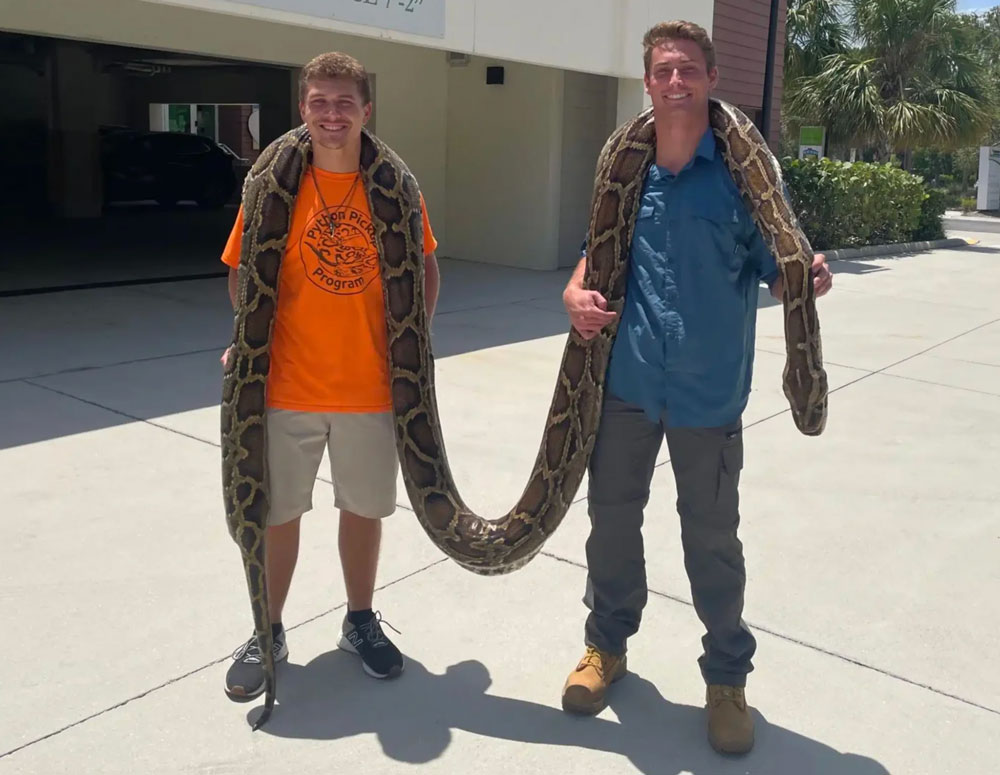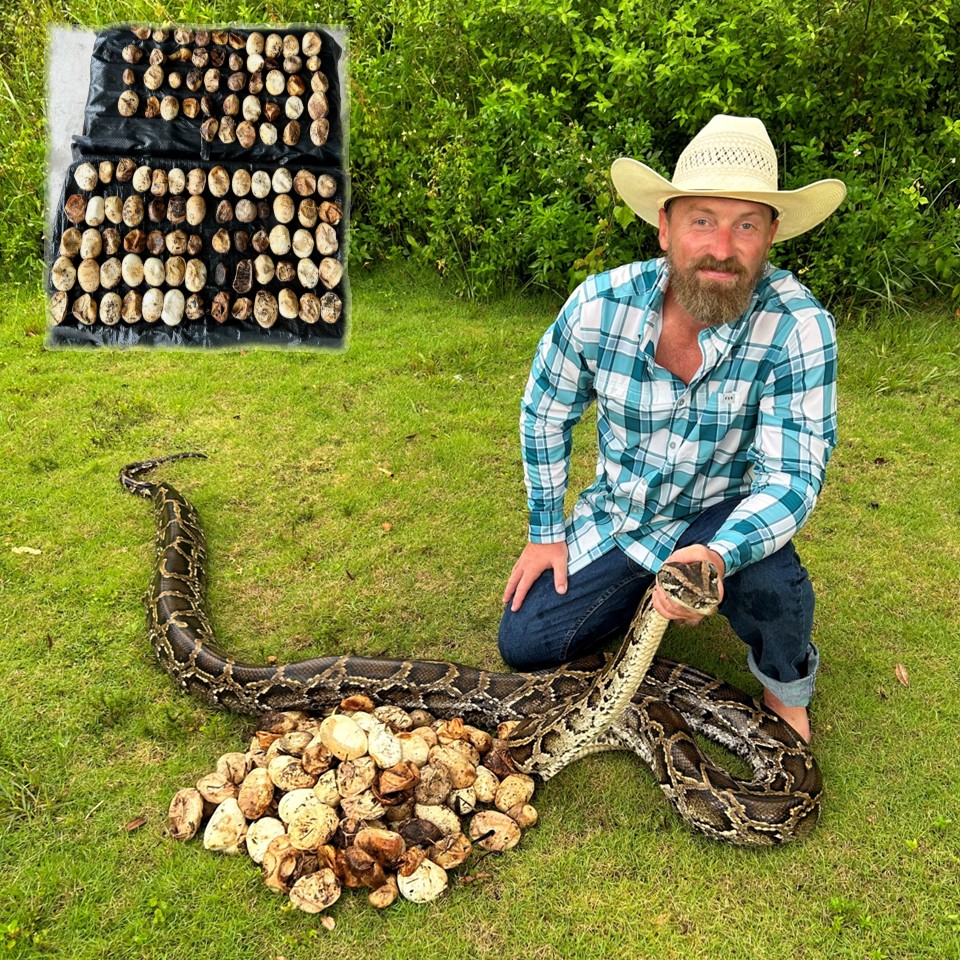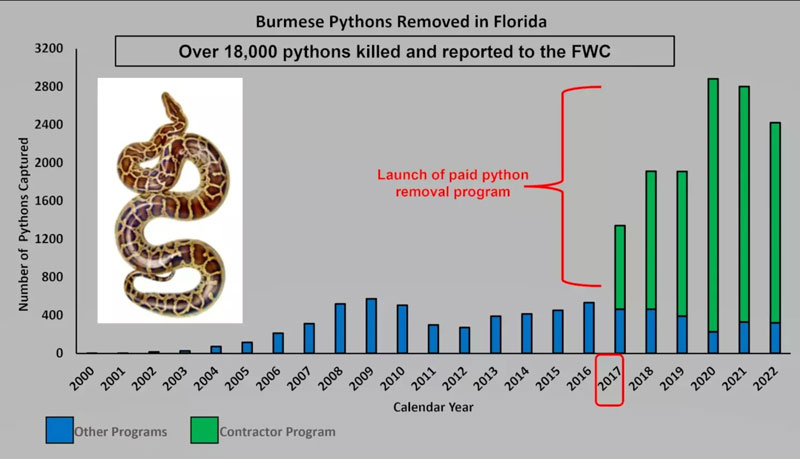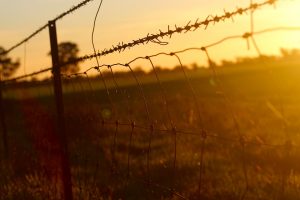With the official start of this year’s Python Challenge still a couple of weeks away, Florida’s late night, bug-bitten snake hunters have been getting a head start.
In an effort to get a handle on the exploding population of invasive Burmese pythons, throngs of snake hunters or herps have been taking to the Everglades and neighboring swamps to get their hands on one (or more) of these massive snakes.
Add in the allure of doing it all in front of a camera and posting to social media and you’ve got content that can rival whatever plastic surgery Kimmy Kardashian is sporting this week. These guys and gals embark out into the swampy wilderness, diving head first into waterways, thick bushes and even into underground nests to pull the next biggest python off the landscape.
The Florida Python Challenge rolls into the Sunshine State each summer and draws snake hunters from across the country who compete for prizes, which this year amount to upwards of $30,000. The annual challenge is put on through an alliance between the Florida Fish and Wildlife Commission, the Fish and Wildlife Foundation of Florida and the South Florida Water Management District.
This year’s installment is set to kick off on August 4th.
Despite this year’s upcoming challenge, the state’s snake hunters have been wasting no time waiting on official start dates or prospective prize money. Many are out there doing the Lord’s work and breaking records while they are at it.
Length Matters
In what would have likely taken the prize money for this year’s challenge, a pair of South Florida hunters nabbed a new record python earlier this month. While you were tucked safely in your bed, Jake Waleri and Stephen Gauta were cruising the swamps of Big Cypress National Preserve during the wee hours of the morning.
It was around 1:00 AM when the pair, affectionately known as the Glades Boys, spotted what they believed to be around a 10-foot python. The pair immediately lept into action, quickly realizing that their prey was slightly larger than their initial estimates.
“It’s the only snake that scared me enough that I just didn’t know what to do,” Waleri, 22, said in a video recounting the experience. “We spotted it at 1 a.m., and thought it was a 10-footer. Then we realized it was an absolute monster.”
After subduing the snake with their bare hands, the Conservancy of Southwest Florida was notified and official measures were requested. The boys brought the massive snake to their facility in nearby Naples where official measurements put the 125 pound python at 19 feet in length.
The previous record for the longest python measured in at 18 feet 9 inches and weighing in at 215 pounds.
All of the Babies
It wasn’t a week later that another snake enthusiast, this time a state contracted snake hunter, broke yet another Florida python record.
After putting hands on a nice sized female python, the captor stumbled across the female’s nest not long after. As part of the efforts to clean up these snakes from the landscape, contractors and hunters are encouraged to look for signs of nesting and destroy any and all eggs as well.
Doing just that, the member of Florida’s Python Action Team Removing Invasive Constrictors (PATRIC), sunk his hands into the nest and hit Burmese paydirt.
Building a pile only a true snake hunter could love, a total of 111 unhatched eggs were pulled from the nest – another record in the state of Florida.
“The Python Action Team Removing Invasive Constrictors (a.k.a. our PATRIC program) helps remove these invasive, non-native snakes year-round,” wrote the FWC in a July 13 post. “A large invasive Burmese python with a record nest of 111 eggs was removed from the sensitive Everglades ecosystem thanks to PATRIC.”
The Sweet Slither of Success
While pythons are likely to remain a problem in Florida for the foreseeable future, programs such as the Python Challenge, PATRIC and other programs that offer monetary incentives have proven to reduce pythons and preserve the native species.
Since 2000, FWC has reported that over 18,000 pythons have been removed from the Florida landscape. With the introduction of paid programs to help support those efforts, the amount of snakes taken absolutely skyrocketed. With the support of various agencies, organizations along with Capt. Ron, this is one program that shows no signs of slowing down.






